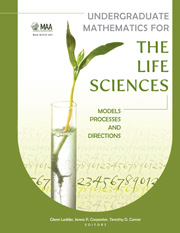Foreword: An Invitation to BIO SIGMAA
Summary
Although the history of mathematics and computation in biology began a long time ago, the history of this volume begins with the formation of BIO SIGMAA. In January of 2006, Carl Cowan and Michael Pearson spoke with me about the SIGMAAs of the MAA at the Joint Mathematics Meetings in San Antonio. Carl was President of the MAA at the time and saw mathematical biology as an important growing area in mathematics and one that might benefit from the SIGMAA program of the MAA. I had helped run several successful MAA PREP workshops related to mathematical and computational biology and I suppose that put me on Carl's list. I am also tall, which makes me easy to track down in a crowded room.
Over the next few days, we spent time talking with other people we thought might be interested in being a part of the SIGMAA. There was a great deal of support from people both more and less experienced than I. Somehow I found myself organizing the effort, but I was really just collating the ideas of others. I finished the first draft of the charter in April 2006 and after feedback, it was completed by July. In August 2006, BIO SIGMAA became the tenth SIGMAA.
- Type
- Chapter
- Information
- Undergraduate Mathematics for the Life SciencesModels, Processes, and Directions, pp. ix - xPublisher: Mathematical Association of AmericaPrint publication year: 2013



